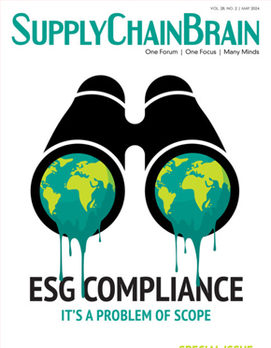
In 2017, the 1,000 largest non-financial companies posted their strongest working-capital performance since 2008, according to the latest Working Capital Survey by The Hackett Group, Inc. As a group, they knocked one and a half days off their cash conversion cycle from the prior year.
Best-in-class performers in the Hackett Group survey now convert working capital into cash nearly three times faster than typical companies. They collect from customers 2.7 weeks faster.
But the real source of their prowess can be found on the supplier side. According to Hackett, top performers pay suppliers three weeks slower, and hold less than half the inventory of the average company.
In other words, when it comes to managing working capital, suppliers are bearing the brunt of top companies’ recent success.
In 2017, companies took 3.4 days longer to pay suppliers than in the previous year, stretching days payable outstanding to 56.7 days. Other elements of working-capital performance actually deteriorated in 2017, with increases of 4.4 percent in days sales outstanding (DSO), and 0.6 percent in days inventory on hand.
“The primary strategy many companies are using to improve working-capital performance is simply to hold back payments to suppliers, in some cases extending payment terms up to 120 days,” says Craig Bailey, associate principal with The Hackett Group. As a result, suppliers’ DSO performance has been driven to a 10-year high, threatening their financial stability.
Businesses are driven to seek improvements in the management of working capital for multiple reasons. In the 2017, one motivator was the gradual rise in interest rates. Another was a surge in mergers and acquisitions, creating a need for cash. But placing the burden on suppliers creates new risks throughout the supply chain.
At the same time, says Bailey, corporate debt is reaching record levels. Debt as a percentage of revenue hit 51 percent in 2017, compared with around 33 percent between 2008 and 2013. Expect those liabilities to become tougher to bear as interest rates continue to rise.
All of which is causing companies to scramble for new solutions to making better use of working capital. And it’s not as though they lacked creative strategies to that end, says Bailey. Supply-chain financing by banks can help to improve payables performance in the short term, even as it fails to address underlying process inefficiencies.
No manufacturer sets out to deliberately destabilize its supplier base, of course. “I believe that from everyone I’ve been speaking to that they are conscious of supplier health,” says Bailey. “They’re looking to see where they can negotiate terms.”
Too often, however, that translates into simply stretching out payment periods. Tier 1 suppliers, in turn, are forced to impose similarly harsh terms on their own supplier bases, all the way up the chain. Eventually the buck-passing hits a supplier that survives on margins so thin that it can’t sustain the addition burden. And the whole edifice becomes subject to collapse.
Another option for speeding up payment to suppliers is “dynamic” discounting, whereby a supplier agrees to accept less money in exchange for accelerated terms. Again, though, it’s the supplier who shoulders the responsibility for improving the financial position of its customers.
Numerous financial institutions have stepped up to offer supply-chain financing options, but Bailey cautions against going that route “without having a firm base in place.” First, he says, companies need to have a strong invoice-approval mechanism, to confirm that the right payments are being disbursed.
Spend discipline is also key, he says. Good corporate governance ensures that the procurement function is drawing only from a pool of approved suppliers, and not engaging in “rogue spend.”
There are other strategies for improving working capital that don’t undermine supplier stability. A company can seek to differentiate critical from non-critical suppliers, extending preferential treatment to those vendors that are most essential to the flow of raw materials, components and finished goods. And they can turn to options presented by new technologies, including robotic process automation, blockchain and digital transformation, to realize new efficiencies throughout the supply chain.
“This is going to be an interesting year for many reasons,” says Bailey. “I believe we’ll see DSO continue to increase. At the same time, more organizations are waking up to how they manage open accounts receivable.”
One thing is clear: supplier health is key to managing supply-chain risk, and future improvements in working capital can’t come from further chipping away at vendors’ financial stability. Suppliers can no longer afford their customers’ inefficient and short-sighted business practices.







